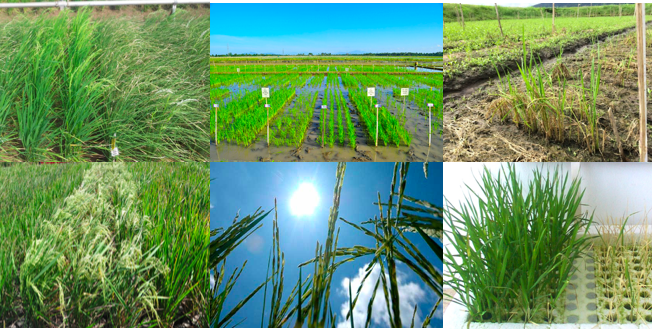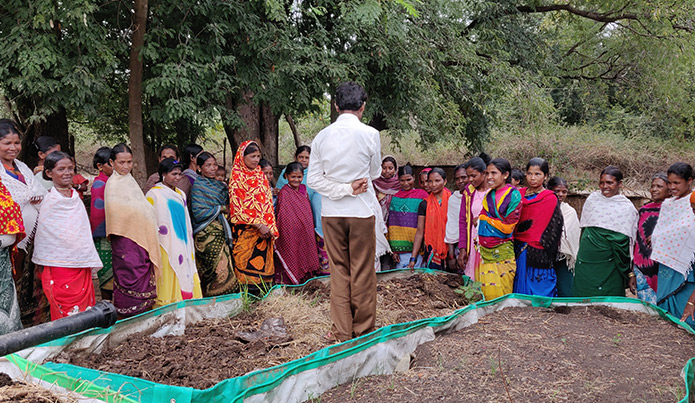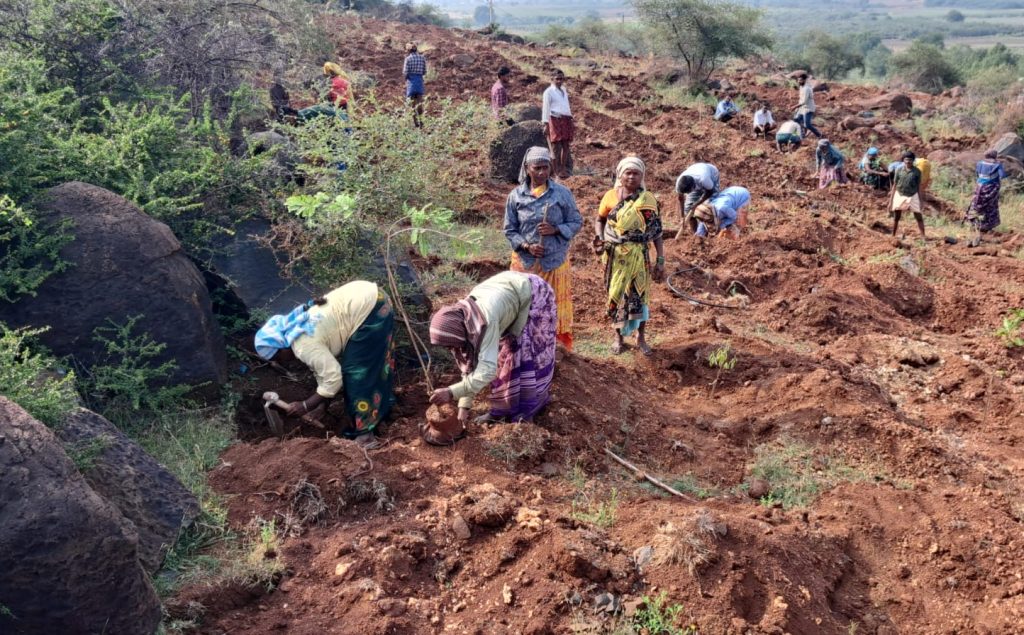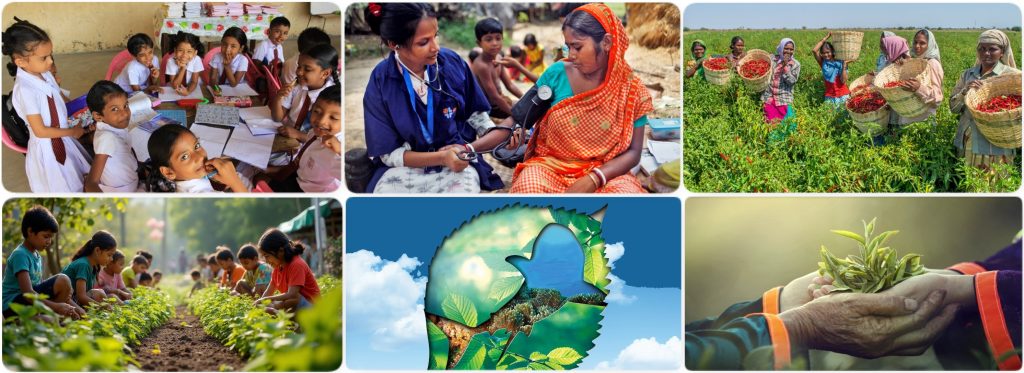
 KG Umesh is the HR Director of Himalaya Wellness Company.
KG Umesh is the HR Director of Himalaya Wellness Company.
From merely being environmentally responsible, sustainability today is deeply aligned with social impact. Corporations across industries are integrating sustainability with community welfare, ensuring that their green initiatives protect the planet and elevate the lives of the underprivileged. From regenerative agriculture to afforestation projects, businesses have leveraged sustainability to support economic empowerment, environmental restoration, and social inclusion.
Himalaya Wellness Company: The ‘Social Purpose-Sustainability’ Way
As a forward-thinking company in the wellness domain, Himalaya Wellness Company has long been an ardent proponent of sustainability that focuses on community welfare. Our initiatives not only address carbon footprint and water conservation, but also include uplifting farmers, rural communities, and ecological landscapes.

 One such initiative is Himalaya’s Regenerative Agriculture drive, through which 100 per cent of the herbs used in our products are sourced from farms that practice sustainable methods. Himalaya has been working with farmer communities to cultivate herbs using organic composting, without chemical fertilisers.
One such initiative is Himalaya’s Regenerative Agriculture drive, through which 100 per cent of the herbs used in our products are sourced from farms that practice sustainable methods. Himalaya has been working with farmer communities to cultivate herbs using organic composting, without chemical fertilisers.  These practices keep our soil healthy by conserving water resources, natural vegetation, and local land productivity. We keep track of the farms we source from in each stage, ensuring high compliance. All these practices help improve the lives of farmers and build healthier communities through reduced costs, improved crop yield, and greater resilience to market volatility. Promoting sustainable farming practices also helps us reap more diverse phytochemical-rich herbs and an optimal yield that ultimately becomes effective, sustainable, and GMO-free herbal products you have come to rely on us for.
These practices keep our soil healthy by conserving water resources, natural vegetation, and local land productivity. We keep track of the farms we source from in each stage, ensuring high compliance. All these practices help improve the lives of farmers and build healthier communities through reduced costs, improved crop yield, and greater resilience to market volatility. Promoting sustainable farming practices also helps us reap more diverse phytochemical-rich herbs and an optimal yield that ultimately becomes effective, sustainable, and GMO-free herbal products you have come to rely on us for.
Companies are increasingly adopting digital solutions for sustainable agriculture, using IoT-based soil monitoring and mobile applications to help farmers with real-time data. According to the Agriculture Census of India and the Ministry of Agriculture and Farmers’ Welfare, water conservation projects initiated in 2022 across drought-prone regions have led to the construction of numerous check dams and the implementation of drip irrigation systems covering thousands of hectares. Additionally, rainwater harvesting and restoring traditional water bodies have enhanced water conservation. These initiatives have reduced crop losses and promoted sustainable farming practices.
Additionally, Himalaya has collaborated with grassroots organisations to implement biodiversity preservation programmes. These programmes seek to protect endangered medicinal plants and assist local farmers in transitioning to organic agricultural practices. Such initiatives help maintain ecological balance while empowering rural communities economically. Studies show that integrating traditional knowledge with modern agricultural techniques enhances productivity and sustainability.[i]
Industry-Wide Sustainable Initiatives
Digital Agriculture and Water Conservation
 Companies are increasingly adopting digital solutions for sustainable agriculture, using IoT-based soil monitoring and mobile applications to help farmers with real-time data. According to the Agriculture Census of India and the Ministry of Agriculture and Farmers’ Welfare, water conservation projects initiated in 2022 across drought-prone regions have led to the construction of numerous check dams and the implementation of drip irrigation systems covering thousands of hectares.[ii] Additionally, rainwater harvesting and restoring traditional water bodies have enhanced water conservation. These initiatives have reduced crop losses and promoted sustainable farming practices.
Companies are increasingly adopting digital solutions for sustainable agriculture, using IoT-based soil monitoring and mobile applications to help farmers with real-time data. According to the Agriculture Census of India and the Ministry of Agriculture and Farmers’ Welfare, water conservation projects initiated in 2022 across drought-prone regions have led to the construction of numerous check dams and the implementation of drip irrigation systems covering thousands of hectares.[ii] Additionally, rainwater harvesting and restoring traditional water bodies have enhanced water conservation. These initiatives have reduced crop losses and promoted sustainable farming practices.
Furthermore, digital tools like blockchain technology are being utilised to ensure transparency in supply chains, enabling farmers to receive fair compensation for their produce. This helps foster trust between corporations and farming communities while reducing inefficiencies in agricultural value chains. Studies have shown that such technological interventions can increase farm productivity by up to 20 per cent while reducing resource wastage[iii].
Climate-Resilient Agriculture
 Companies are promoting climate-resilient agriculture through heat-resistant crop varieties and sustainable farming methods, benefiting the farmer community. According to the National Innovations in Climate Resilient Agriculture (NICRA), recent projects targeting soil health restoration in northern India have helped thousands of farmers transition to organic farming methods, resulting in substantial reductions in chemical fertiliser use.[iv] Programmes typically include comprehensive soil testing and customised nutrient management plans for participating farms. Several companies have established networks of climate-smart villages serving as demonstration sites for sustainable agricultural practices. These climate-smart villages serve as models for integrated farming, incorporating vermicomposting, biogas, and solar irrigation.
Companies are promoting climate-resilient agriculture through heat-resistant crop varieties and sustainable farming methods, benefiting the farmer community. According to the National Innovations in Climate Resilient Agriculture (NICRA), recent projects targeting soil health restoration in northern India have helped thousands of farmers transition to organic farming methods, resulting in substantial reductions in chemical fertiliser use.[iv] Programmes typically include comprehensive soil testing and customised nutrient management plans for participating farms. Several companies have established networks of climate-smart villages serving as demonstration sites for sustainable agricultural practices. These climate-smart villages serve as models for integrated farming, incorporating vermicomposting, biogas, and solar irrigation.
In addition, companies are actively engaging in capacity-building workshops to train farmers in adaptive techniques that mitigate risks associated with erratic weather patterns. For instance, introducing agro-climatic advisories via mobile platforms has empowered farmers to make informed decisions about planting and harvesting schedules. Such initiatives align with global frameworks like the United Nations Sustainable Development Goals (SDGs), particularly Goal 13, which emphasises climate action.[v]


Corporate efforts in biodiversity conservation have led to the establishment of multiple medicinal plant conservation centres across India. The National Medicinal Plants Board (NMPB) highlights that these centres focus on documenting and preserving endangered species, maintaining extensive seed banks, and conducting research on cultivation methods for rare indigenous plants. Recent programmes have identified and begun cultivating dozens of rare medicinal plant species at risk of extinction. These initiatives support thousands of small-scale farmers in organic cultivation while preserving biodiversity. Regular workshops on sustainable harvesting practices and traditional medicine preparation methods complement these efforts.
Sustainable Agriculture Initiatives
Environmental programmes have revolutionised traditional farming practices across India. Companies have trained thousands of farmers in sustainable techniques and agroforestry methods. These programmes integrate agroforestry, balancing commercial agriculture with ecological conservation. According to the Food and Agriculture Organisation (FAO) and NITI Aayog reports, partnerships with agricultural scientists have led to the development of disease-resistant crop varieties, showing significant improvements in yield while reducing chemical pesticide dependency.[vi] Training in intercropping techniques helps farmers diversify income sources while maintaining soil health.
 Moreover, the integration of agroforestry has proven to be a game-changer in combating deforestation and enhancing carbon sequestration. Trees planted alongside crops not only improve soil fertility but also function as natural windbreakers, protecting crops from extreme weather events. Research highlights that agroforestry systems can sequester up to twenty-five tons of carbon per hectare annually, making them vital for mitigating climate change.[vii]
Moreover, the integration of agroforestry has proven to be a game-changer in combating deforestation and enhancing carbon sequestration. Trees planted alongside crops not only improve soil fertility but also function as natural windbreakers, protecting crops from extreme weather events. Research highlights that agroforestry systems can sequester up to twenty-five tons of carbon per hectare annually, making them vital for mitigating climate change.[vii]
Indigenous Plant Conservation
 Corporate efforts in biodiversity conservation have led to the establishment of multiple medicinal plant conservation centres across India. The National Medicinal Plants Board (NMPB) highlights that these centres focus on documenting and preserving endangered species, maintaining extensive seed banks, and conducting research on cultivation methods for rare indigenous plants. Recent programmes have identified and begun cultivating dozens of rare medicinal plant species at risk of extinction. These initiatives support thousands of small-scale farmers in organic cultivation while preserving biodiversity. Regular workshops on sustainable harvesting practices and traditional medicine preparation methods complement these efforts.
Corporate efforts in biodiversity conservation have led to the establishment of multiple medicinal plant conservation centres across India. The National Medicinal Plants Board (NMPB) highlights that these centres focus on documenting and preserving endangered species, maintaining extensive seed banks, and conducting research on cultivation methods for rare indigenous plants. Recent programmes have identified and begun cultivating dozens of rare medicinal plant species at risk of extinction. These initiatives support thousands of small-scale farmers in organic cultivation while preserving biodiversity. Regular workshops on sustainable harvesting practices and traditional medicine preparation methods complement these efforts.
 Additionally, corporations are collaborating with local governments and NGOs to restore degraded ecosystems. Projects aimed at rewilding forest areas and reviving native flora have shown promising results in improving biodiversity indices. For example, reforestation drives focusing on indigenous tree species have increased wildlife habitats and improved groundwater recharge rates in several regions. Such efforts underscore the critical role of corporate entities in addressing the dual challenges of biodiversity loss and ecosystem degradation.
Additionally, corporations are collaborating with local governments and NGOs to restore degraded ecosystems. Projects aimed at rewilding forest areas and reviving native flora have shown promising results in improving biodiversity indices. For example, reforestation drives focusing on indigenous tree species have increased wildlife habitats and improved groundwater recharge rates in several regions. Such efforts underscore the critical role of corporate entities in addressing the dual challenges of biodiversity loss and ecosystem degradation.
Success Stories and Community Impact
All these efforts contribute to steady and continuous growth in the relationship between corporations and marginalised communities while ensuring the long-term preservation of nature. For example, afforestation programmes have been responsible for planting millions of trees in collaboration with grassroots organisations.[viii] Additionally, initiatives aligned with India’s National Agroforestry Policy have supported farmer incomes and rural development.

 Himalaya’s afforestation tree-planting programme planted over five lakh trees in 2024, surpassing a cumulative plantation of over 1.5 million trees since its inception in 2012. These afforestation initiatives span different ecosystems, including mangrove restoration in Kumta, Karnataka, strengthening coastal resilience through Pune’s urban greening for
Himalaya’s afforestation tree-planting programme planted over five lakh trees in 2024, surpassing a cumulative plantation of over 1.5 million trees since its inception in 2012. These afforestation initiatives span different ecosystems, including mangrove restoration in Kumta, Karnataka, strengthening coastal resilience through Pune’s urban greening for  air quality and biodiversity improvement through social forestry projects. In 2024, trees were planted across Karnataka, Andhra Pradesh, Maharashtra, Chhattisgarh, and Meghalaya in collaboration with visionary NGOs. These efforts align with Himalaya’s 2030 vision to plant five million trees and source 95 per cent of our herbs from regenerative farms. Collaboration with grassroots organisations, such as Snehakunja Trust in Sirsi and Synjuk in Meghalaya, shows how corporate initiatives can blend seamlessly into regional conservation efforts.
air quality and biodiversity improvement through social forestry projects. In 2024, trees were planted across Karnataka, Andhra Pradesh, Maharashtra, Chhattisgarh, and Meghalaya in collaboration with visionary NGOs. These efforts align with Himalaya’s 2030 vision to plant five million trees and source 95 per cent of our herbs from regenerative farms. Collaboration with grassroots organisations, such as Snehakunja Trust in Sirsi and Synjuk in Meghalaya, shows how corporate initiatives can blend seamlessly into regional conservation efforts.
Furthermore, renewable energy solutions in rural areas have significantly improved living standards. Solar-powered irrigation systems and microgrids have enabled farmers to reduce dependency on fossil fuels, cutting operational costs and greenhouse gas emissions. Reports indicate that access to clean energy has boosted agricultural productivity by 15–20 per cent in regions where these systems have been implemented.[ix]
There is a pressing need for strong collaboration across sectors to successfully scale effective sustainability models. Partnerships between corporations, academic institutions, and government agencies can facilitate knowledge sharing and resource pooling, accelerating progress toward national and global sustainability targets. Furthermore, fostering public awareness about the importance of sustainable practices can drive consumer demand for eco-friendly products, incentivising businesses to adopt greener operations.
The Role of Corporate Leadership in Sustainability
Corporate leadership plays a pivotal role in driving sustainability initiatives. CEOs and senior executives prioritising environmental, social, and governance (ESG) criteria often inspire organisational-wide commitment to sustainability goals. Companies have set benchmarks in aligning business strategies with ESG principles, demonstrating that profitability and sustainability can go hand in hand.
Leadership-driven sustainability policies also encourage innovation. For instance, investments in R&D for biodegradable packaging materials and waste-to-energy technologies reflect how corporations are reimagining traditional business processes to minimise environmental footprints. Moreover, transparent reporting mechanisms, such as publishing annual sustainability reports, enhance accountability and foster stakeholder trust.
The Path Forward
As climate challenges intensify, these corporate efforts are crucial examples of how businesses can contribute to environmental conservation while supporting local communities’ economic well-being. The continued evolution and expansion of these programmes will play a vital role in India’s journey toward sustainable development and biodiversity conservation. Through sustained commitment and innovative approaches, Indian corporations are setting new standards for environmental responsibility while creating lasting positive impacts on ecosystems and communities.

There is a pressing need for strong collaboration across sectors to successfully scale effective sustainability models. Partnerships between corporations, academic institutions, and government agencies can facilitate knowledge sharing and resource pooling, accelerating progress toward national and global sustainability targets. Furthermore, fostering public awareness about the importance of sustainable practices can drive consumer demand for eco-friendly products, incentivising businesses to adopt greener operations.
Integrating sustainability into corporate strategies is no longer optional—it is imperative. By prioritising environmental stewardship and social equity, corporations can shape a more resilient and inclusive future for all.
References:
[i]https://link.springer.com/article/10.1007/s40974-017-0074-7
[ii]https://www.nabard.org/auth/writereaddata/tender/1710224557farmers-welfare-in-india-a-state-wise-analysis.pdf
[iii]https://www.sciencedirect.com/science/article/pii/S2405959524000316
[iv]https://www.icar-crida.res.in/assets/img/Books/FTF%20ITI-%20Compendium%20of%20lectures-2019.pdf
[v]https://www.sciencedirect.com/science/article/pii/S2665972724002125
[vi]https://www.niti.gov.in/sites/default/files/2023-04/Report-UNCDF.pdf
[vii]https://www.sciencedirect.com/science/article/pii/S266671932400147X
[viii]https://fsi.nic.in/uploads/isfr2023/isfr_book_eng-vol-1_2023.pdf
[ix]https://www.sciencedirect.com/science/article/pii/S2352484723010521

